Helicopters Bratukhina
In January, 1940, at the Sergo Ordzhonikidze Moscow Aviation Institute, organized a new helicopter Experimental Design Bureau. The core of the OKB-3 was a group of calculators and designers who worked for several years in the department of special structures of TsAGI on this topic. The new bureau for several months (until March 1940 of the year) was headed by Professor Yuriev B.N., however, due to the large employment, he was forced to leave the OKB and transfer the case to I. P. Bratukhin.
Bratukhin Ivan Pavlovich
Bratukhin I.P. - Chief Designer of the first Soviet serial helicopters, doctor of technical sciences, professor, Honored Scientist and Technician of the RSFSR.
In 1930, he graduated from Bauman Moscow State Technical University. In 1930, he became a graduate student of YOU - MAI. In 1934, he became the head of the “B” brigade (helicopter development) of the special structures section of TsAGI. Participated in the creation of the first Soviet helicopters TsAGI 1-EA, TsAGI 5-EA. He led the project of the world's first combined helicopter TsAGI 11-EA.
Bratukhin in March 1940 headed the MAI OKB-3. In this experimental design bureau, the Omega helicopter was designed - the first domestic machine of the transverse scheme, which showed high flight performance. On its basis, serial cross-section helicopters G-3, G-4, as well as experienced B-5, B-9, B-10 and B-11 were created.
In the period from 1951 to 1957, he headed the department of scientific and technical information of TsAGI. In 1957 - 1985 - he headed the MAI department of "Design and design of helicopters". In 1955, he wrote the book "Design and construction of helicopters" - the first national textbook on helicopter design problems. In the book, Bratukhin first proposed a method for selecting the main parameters of helicopters and systematized a huge amount of material on their design. Under his leadership, Bratukhin's theses were defended by 2 doctors and more than 10 candidates.
In 1958 - 1968, he served as vice-rector of the institute for scientific work. On the initiative of Bratukhin, in 1970, on the basis of the department, a branch research laboratory on advanced helicopter design was organized.
Member of the Higher Attestation Commission of the USSR He was elected a deputy of the Moscow Soviet of the second convocation, a member of the Sokolnichesky RK CPSU of Moscow. In 1946, the USSR State Prize. He was awarded the Order of the October Revolution, Lenin, Red Banner of Labor, as well as medals.
He was buried at the Mitinskoye cemetery in Moscow.
Multi-purpose helicopter "Omega"
The first experimental object - helicopter 2MG "Omega". His draft design was reviewed and approved on July 27 1940 of the year. Bratukhin, starting work on the helicopter, gave preference to the transverse scheme. Soon after the final approval of the project, the construction of the Omega helicopter equipped with two air-cooled engines began.
The Omega fuselage, a truss structure welded from steel pipes, was sheathed with percale. Double cabin cockpit and observer located in the bow. Two air-cooled in-line engines Renault MB-6 (power of each 220 hp) were rotated in opposite directions by three-lobe rotors. The engines were installed together with the screws on the ends of the consoles in the engine nacelles. This greatly facilitated their replacement. To reduce the length of the consoles increased the load on the screws. This allowed to reduce the diameter of the screws and the dimensions of the entire machine. The power plant had two gearboxes. The lower gearbox was connected to the crankshaft of the engine through a freewheel, transferring the rotation to the vertical shaft. To obtain the same rotations of the screws, the lower gearboxes were mated with a synchronous shaft, which consisted of two halves, connected in turn by a synchronous coupling. The top gearbox transferred the engine power to the rotors from the vertical shaft. The blades were all-metal construction. They were attached to the bushing through horizontal, vertical and longitudinal hinges (were later replaced with oil dampers). For balancing the helicopter in horizontal flight there was a tail empennage, which consisted of a T-shaped stabilizer and a keel with a rudder. The transverse and longitudinal control was carried out by tilting the thrust vector of the screws in conjunction with a change in the differential and cyclic pitch of the rotors. The pedals connected to the steering wheel served for the trip control. The stabilizer was deflected by a steering wheel.
The main purpose of the helicopter "Omega" was supposed to be the adjustment of artillery fire. The helicopter was supposed to hang, and the radio spotter was supposed to monitor the shells' breaks, informing the gunners of their observations.
But the Great Patriotic War made unexpected adjustments to the fate of the helicopter. Evacuation to Alma-Ata delayed the first flight of the Omega for almost two years. Pilot Ponomarev in the summer of 1943, performed the first vertical takeoffs / landings and turns on the spot. Only after that began flying in circles at low speeds.
The first flights, despite the slight whims of the engines, gave satisfactory results. The selected scheme is fully justified. Moreover, having made the necessary improvements, as stated in the act of the state commission, Omega can be used not only for military purposes, but also for national economic needs. The Bratukhin Design Bureau built the car in 1944, and the tests of the Omega II began soon at the factory airfield. Omega became the ancestor of the family of rotary-winged cars. Behind it, all-metal G-3, G-4, six-seater passenger B-5 were developed.
Omega II
After returning from evacuation, OKB-3 developed Omega II. Row motors were replaced with star-shaped MG-31F with new gearboxes and motor mount. The side trusses were modified, but the diameter of the screws remained the same.
Factory tests were carried out for five months, from September 1944 of the year, by pilot Ponomarev K.I. At this stage, the gear ratio of the gearbox connecting the screws and the engines was changed, which made it possible to raise the thrust by almost a kilogram of 300, and this led to an increase in the ceiling. However, at that time, the altitude was not the main characteristic. The struggle with vibrations turned out to be more important, since only they did not allow the machine to start a “greater life”.
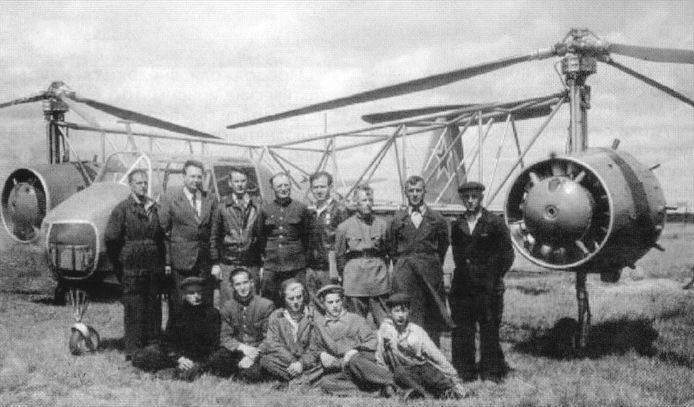
Aircraft performance characteristics:
The diameter of the rotors - 7,00 m;
Length - 8,20 m;
Width - 14,20 m;
Empty weight - 1760 kg;
Maximum take-off weight - 2050 kg;
Engine type - MB-6;
Power - HP 220;
Maximum speed - 186 km / h;
Practical range - 250 km;
Practical ceiling - 700 m;
Static ceiling - 290 m;
Crew - 1 man;
Payload - 1 passenger.
Multi-purpose helicopter G-3
The artillery spotter G-3 was built on the basis of the Omega. This helicopter aroused great interest in terms of its practical use.
Since there were no MG-31-F engines, a number of imported Pratt-Whitney R-985 AN-1 aircraft engines were purchased, the take-off power of which was 450 hp. They were given the task to build an experimental prototype of a helicopter based on the Omega base, with the installation of new imported engines. Two such helicopters were built during the 1945 of the year, which received the name "artillery spotter" (factory designation G-3).
The schematic diagram and most of the main units of the G-3 helicopter were the same as those of the Omega helicopter. Structural changes have affected only the elements of the apparatus, which are directly related to the new engines: transmission elements, engine frames, bonnets, etc. Transmission gear ratio retained.
They built two copies of the helicopter G-3, which were subjected to flight tests.
Even before the end of the tests, it was decided to build a military series of 10 units at one of the aircraft factories. During 1945-1946, five serial helicopters were built.
In the 1946 year, in addition to the Omega-II helicopter equipped with the MG-31-F engine, two G-3 helicopters took part (the machines were piloted by Ponomarev KI and Mareev VG).
During the flight test 7 January 1947, one of the G-3 crashed. The cause of the breakdown was the fatigue of the main rotor shaft. Pilots Dolgov AK and Kovynev V.V. survived, but suffered spinal injuries.
For a number of reasons, which mainly concerned organizational issues, the built G-3 serial helicopters were not fully utilized for their intended purpose. In 1948-1949, one of the serial G-3s was transferred to a military unit to train and train flight crews. For the purpose of safety, significant restrictions were imposed on the flights of these vehicles: speed - no more than 30 km / h, height - up to 10 meters.
Aircraft performance characteristics:
The diameter of the rotors - 7,00 m;
Length - 8,20 m;
Width - 14,20 m;
The mass of the empty helicopter - 2195 kg;
Take-off weight - 2600 kg;
Engine type - Pratt Whitney R-2 AN-985 piston engines 1;
Power of one engine - hp 450 .;
Maximum speed - 170 km / h;
Cruising speed - 146 km / h;
Practical range - 233 km;
Practical ceiling - 2500 m;
Static ceiling - 1400 m;
Crew - 1 man;
Payload - 1 passenger.
Multi-purpose helicopter G-4
In February, the 1946 of the year, even before the “artillery spotter” drawings were put into production, a government decree was issued that provided for the development of a three-seat helicopter with the same purpose, but with M-26GR engines and a six-seater passenger car. The release of this resolution was caused by the depletion of stocks of imported Pratt-Whitney engines.
On the first point, it was prescribed that the maximum speed of the “artillery spotter” at an altitude of 3 thousand m was up to 230 km / h, the static ceiling was at least 4 thousand m and dynamic - up to 6 thousand m. make up three hours. In addition to the two crew members, the helicopter had to lift one passenger. The car for state tests was required to pass by 1 June. However, these are all just plans. In reality, OKB-3 conducted a modification of the Omega.
The engine M-26GR, and then its version M-26 GR (F) (later received the designation AI-26 GR (F)) forced by changing the boost to 550 HP became the first domestic engine developed for helicopters. It is widely used on the Mi-1. The latest modification of the engine, the M-26 GRF, with a dry weight of 445 kg, developed the take-off power of the 575 hp, and at the height of 2 thou. M. Nominal - 460 hp.
The G-4 helicopter, in contrast to Omega and G-3, had bearing rotor diameters 7,7 m. Their design was all-metal. The nose part was made of duralumin solid beams, turning into a round butt, attached to the sleeves of the screw bush. The tail part is hollow, riveted from duralumin sheets and a set of stringers and diaphragms. Blades - flat, without twist. Blade profile - NACA-23016.
Under the designation G-4, the car went up into the air only in the autumn of 1946, but in July, the Kiev plant No. 473, according to a government decree, was to produce the first 1 machines by February 1947. A later order planned to create more 5 helicopters. At the stage of the factory tests, the engineer Remezov G.V. and pilot Baykalov M.K., who had previously mastered the G-25.
In April, the 1947 th copy of the G-2 “Doubler” was put to the test. On the "Doubler", unlike its predecessor, installed new blades of propellers with geometric twist, which improved the flight characteristics of the helicopter. In January, the 4 of the year, having flown just 1948 16 hours of minutes, the car suffered a serious accident. G-18, piloted by M.K. Baikalov, approaching the landing, from a height of about 4 meters began to decline faster than usual. On the 50 meters, going to the cabling, the helicopter hit the ground at the same vertical speed. The pilot got off with a fright, but the car could not be repaired. The commission came to the conclusion that the cause of the accident was excessive alignment before landing.
Despite the short “life” of the second car, Ponomarev and Matsitsky managed to carry out several studies on it. In particular, on the autorotation mode - for the first time in domestic practice. The scheduling speed in this case was 160 km / h, and the vertical speed was 12 m / s. After landing, the mileage at 90 km / h was less than 15 meters.
With the release of serial helicopters launched in June 1947-th year in production, there was also a delay. The first factory G-4 handed over the X-NUMX to the Kiev factory at the end of March. As before, they were conducted by VG Mareev.
The first experienced G-4 at the end of the summer of 1947, after passing 50-hourly life tests, was transferred to the GK NII VVS. By car leading appointed engineer Maryina L.N. and pilot Tinyakova G.A. However, larger-diameter screws and a new power plant did not affect the level of vibrations. The helicopter, as before, continued to "fever." However, this time it was not the pilots who talked about the shaking, but the oscillograms recorded with the help of sensors installed in different places of the helicopter. State tests Mr. 4 did not stand and a year later was sent back to the Design Bureau.
Helicopter G-4 was going to build a party in 10 copies, but the entire 4 machine went off the stocks. In 1947, on Aviation Day, 3 helicopters created in OKB-3 took part in the air parade: two G-3 and one G-4. In the 1948, work on the Quartet was suspended. OKB-3 already thought of larger helicopters — multi-purpose vehicles capable of solving various tasks: conducting air reconnaissance, carrying cargo and people, etc.
Aircraft performance characteristics:
Wingspan - 15,30 m;
The diameter of the main screw - 7,70 m;
Empty weight - 2364 kg;
Take-off weight - 3002 kg;
Engine type - 2 piston engine AI-26GR;
Power of one engine - hp 500 .;
Maximum speed - 148 km / h;
Cruising speed - 121 km / h;
Practical range - 233 km;
Practical ceiling - 2400 m;
Static ceiling - 2400 m;
Crew - 1 man;
Payload - 1 passenger.
Passenger helicopter B-5
The design of an experienced six-passenger passenger helicopter B-5 began in 1945 year. This machine was also performed according to the twin-screw transverse scheme, however, unlike its predecessors, it had a large carrying capacity and dimensions. A feature of this machine was the use of the wing connecting the engine nacelles and the fuselage. This design allowed 25 percent to relieve the rotors during horizontal flight. B-5 was equipped with two engines, AI-26 GRF takeoff power was 550 HP The power increase was achieved by changing the boost. Overall dimensions and weight of the engine remained unchanged. Also, the special reducer, freewheel and starting clutches remained unchanged. Fuselage - aircraft type and normal plumage. The speed of the helicopter B-5 at the height of 3000 m should be 220km / h, the dynamic ceiling - 4500 m, the maximum duration of the flight - 3 hours. The helicopter was built in 1947 year. During the year, several short flights were conducted at low altitudes.
The helicopter B-5, from its predecessors G-3 and G-4, was not only engines but also a design. It was equipped with enhanced transmission and new rotors, the diameter of which was 10 meters, with all-metal blades. Screws were installed without overlap.
A new semi-monocoque duralumin fuselage was developed for the helicopter by a double crew cabin with good glazing and a large passenger cabin. The passenger cabin housed six passengers and a luggage compartment. Chairs installed along the boards of three. For access to the cabin from the left side, the door was completed.
For unloading of screws during the flight, a large upper wing with an area of 15М2 and a span of 10,3 was used by car. Structurally, the wing consisted of 3 parts: two consoles and a center section.
The four-fixed, non-retractable chassis consisted of main supports with large wheels installed under the nacelles of the engines, and a tail and nose supports with self-orienting wheels.
In the 1947, ground tests of the B-5 helicopter began, and in the 1948, flight tests began. During the tests, it turned out that the wing did not provide 25-percent unloading of rotors, and the wing located in the screw flow reduced their thrust in the hover mode. The mass of the empty helicopter was 2932 kg, take-off weight - 4032 kg.
On the basis of this helicopter in the OKB-3, in 1946, we designed and in 1947, built an experienced ambulance helicopter, B-9, which was essentially a modification of the B-5 helicopter.
Aircraft performance characteristics:
The diameter of the rotors - 10,00 m;
Empty weight - 2932 kg;
Take-off weight - 4032 kg;
Empty weight - 2932 kg;
Engine type - 2 piston engine AI-26GR;
Take-off power - 2х550 hp;
Rated power - 2x420 hp;
Maximum speed - 236 km / h;
Cruising speed - 182 km / h;
Practical range - 595 km;
Practical ceiling - 6400 m;
Static ceiling - 2280 m;
Crew - 1-2 person;
The payload is up to 5 passengers.
Sanitary helicopter B-9
In the 1947 year, the ambulance helicopter B-9 having the same design as the B-5 descended from the stocks. In his cabin, in addition to two pilots, there were two passenger seats, a place for a stretcher, and a table of the attendant. If necessary, the number of places for patients could increase to four.
Structurally, the B-9 was created on the basis of the passenger six-seater helicopter B-5 and differed only in the fuselage design. Wing, propulsion, transmission system, rotors, tail, chassis and other units remained unchanged.
The fuselage of the sanitary helicopter B-9 had a slightly larger mid-section. The fuselage was made in the form of a monocoque, assembled from transverse and longitudinal sets of duralumin frames and stringers. The skin of the fuselage is duralumin.
The increase in cabins for patients carried out by the luggage compartment. The stretcher was placed along the starboard in two tiers. The paramedic's table was located on the left side.
Helicopter B-10 - "Observatory"
In 1947, an experienced B-10 helicopter was built, the general layout and design of most of the units of which did not differ from the previously created B-5 and B-9. In accordance with those. the development task was to take the helicopter 5 minutes to an altitude of 2 km and fly at a given altitude of at least 3 hours. The maximum speed of the car was to be at least 180 km / h.
At the B-10, two AI-26-GVF engines were installed, the take-off power of which was 575 HP, and the rated power on the ground, 400 HP.
The helicopter crew consisted of three people: a pilot, a navigator and an observer.
The navigator cabin was located in the forward fuselage and was shifted to the starboard. The pilot's seat was located at the left side and shifted relative to the navigator's seat back.
In the middle part of the fuselage there was a compartment for placing photo and radio equipment. If necessary, this compartment was used for the transport of small loads or two or three passengers.
In the rear fuselage of the helicopter B-10 located the observer cabin.
The wing of the helicopter B-10 differed from the wing B-5 and B-9 by braces going to the upper part of the wing truss from the upper part of the boar support and to the fuselage nodes from the lower part of the wing truss.
The chassis of the helicopter - with a nose wheel, it was possible to clean the engine nacelles.
The tail unit is a stabilizer with a variable installation angle and two keels attached to the ends of the stabilizer.
A feature of the design of the helicopter was the installation of powerful weapons, which consisted of three 20-millimeter aircraft guns. One gun was mounted on the front turret rotating unit with a spherical blister. Two twin guns on the central turret set were designed to protect the rear hemisphere. Two-fin tail plumage did not prevent shelling. As the calculations showed, the installation of artillery weapons significantly worsened the aerodynamic characteristics of the helicopter.
In 1948, the construction of the helicopter was completed but the state was completed. tests did not begin, and further development of the helicopter did not receive support, and soon it was stopped.
During 1946-1947, when the B-5, -9 and -10 helicopters were designed and built, there was a significant reappraisal of previous views on the practical use and use of different types of helicopters, which directly affected the future plans of the OKB-3.
The interest in the three latest developments of the Design Bureau has disappeared, and the task of creating a new helicopter based on helicopter data has come to the fore. So the communications helicopter B-11 appeared.
Aircraft performance characteristics:
The diameter of the rotors - 10,00 m;
Empty weight - 3019 kg;
Take-off weight - 3900 kg;
Engine type - 2 piston engine AI-26 GRF;
Take-off power - 2х575 hp;
Rated power - 2x400 hp;
Maximum speed - 218 km / h;
Cruising speed - 176 km / h;
Practical range - 440 km;
Practical ceiling - 6550 m;
Static ceiling - 2200 m;
Crew - 2 person;
The payload is passenger 3.
Communication Helicopter - B-11
The communication helicopter B-11 is a further development of the B-10. According to the general scheme and design of the main units is similar to previous machines. The wing had the same bearing profile, but the upper and lower struts were supplied with hydraulic dampers. The engines AI-26GR (F) had a power 420 / 550 l. with. Aerodynamic apparatus improved. The nose of the fuselage, in which the double cabin was located, became rounded, the entire finish of the car became cleaner. The tail, as in the G-4 / B-5, had a stabilizer raised above the rudder to the top of the keel. In the central part of the fuselage there was a cargo compartment with a large door. In the cargo compartment could be transported one lying patient and paramedic. The helicopter was controlled using skew automats, which were connected to the pedals and control knob via a total differential mechanism.
In accordance with the designation, the B-11 was equipped with equipment that ensured its use at any time of the day in difficult meteorological conditions. In addition, the necessary radio communications equipment was installed.
In the spring of 1948, a B-11 communications helicopter was prepared for flight tests. In the same year, a communications helicopter took part in an air parade. This helicopter was built on the basis of the passenger helicopter B-5 in accordance with the government decree of December 1947. By order of the B-11, the order of the MAP appointed a pilot Ponomarev KI. and engineer Mazitskogo D.T. Tests of the car passed in the usual mode. On the B-11, as before, considerable shaking was felt, and the 13 of December 1948 of the year was a tragedy. In the area of the airfield Izmailovo one of the propeller blades was torn off. The helicopter, which began to collapse in flight, crashed to the ground. Despite the fact that the heights were a small pilot Ponomarev and a radio operator Nilus died.
By order of Minaviaprom from September 15 1948 of the year, even before the crash of the first helicopter for testing the B-11 “Doubler”, the previous crew was appointed, however, time made its adjustments. At the end of 1949, the factory began testing the machine with a modified and enhanced glider. They were conducted by the pilot Komarov G.I. In May, the car entered the Air Force Institute. In order to avoid emergencies and taking into account previous experience, the chief designer introduced restrictions that prohibited the helicopter from accelerating to speeds above 155 km / h and rising to heights above 2,5 km. Maximum take-off weight was limited to 3950 kg. The word "helicopter" by this time began to be replaced by the Russian "helicopter". This name was proposed by N.I. Kamov in 1929 year.
Pilot Tinyakov G.A. and engineer AM Zagordan. The strongest shaking remained a hereditary "disease" of the helicopter, even the introduction of braces to the hub of the screws practically did not help. As a result, the tests were stopped, putting an end not only in the fate of the machine, but also in the work of OKB-3.
Over 10 years of working on cross-section machines, it was not possible to achieve the calculated parameters. This was mainly due to dynamic strength limitations.
Aircraft performance characteristics:
The diameter of the rotors - 10,00 m;
Empty weight - 3398 kg;
Take-off weight - 4150 kg;
Engine type - 2 piston engine AI-26 GRF;
Rated power - 2x420 hp;
Take-off power - 2х550 hp;
Maximum speed - 155 km / h;
Cruising speed - 124 km / h;
Practical range - 328 km;
Static ceiling - 1200 m;
Practical ceiling - 2550 m;
Crew - 2 person.
Unrealized projects
The draft designs of experienced helicopters for personal concepts and various purposes, developed by the Bratukhin Design Bureau, are of considerable interest, even though they have not been implemented.
In 1947, the conceptual design of an amphibious heavy helicopter was developed. The schematic diagram was the same as that of the previous devices, that is, twin-screw with transverse arrangement of rotors.
The helicopter was supposed to be equipped with two M-82FN air-cooled engines. The diameter of the rotors - 16 meters, the flight mass - about 10 thousand. Kg. The helicopter was intended for the transfer of military equipment (guns, cars, etc.) and thirty soldiers.
During the 1948-1950, the design bureau produced a draft design of a multipurpose and training B-12 helicopter.
When developing a multi-purpose helicopter with two M-14 engines, a single-rotor scheme with a tail rotor was adopted.
The options developed differed mainly in the engines used, the design of some elements and the number of places. In accordance with this, the expected flight characteristics varied. In all the draft designs there were interesting innovations.
For example, in order to increase safety in the transmission system, it was planned to install an additional emergency free-wheeling coupling, which provided free rotation of the propeller in case of failure of transmission units.
In addition, a special device had to be installed, automatically switching the rotor to the autorotation mode when the engines stopped, the steering screw was damaged (stopped) or the transmission elements were damaged.
A general idea of the work of the Bratukhin Design Bureau will be incomplete, if one does not mention another work - the creation of a jet helicopter with direct-flow engines located at the ends of the blades.
The sketch design of this helicopter project was launched in 1948 year. This machine was supposed to be equipped with a reactive rotor, equipped with a pair of direct-flow engines. It was a single-rotor single-rotor helicopter project with a two-bladed jet propeller. Direct-flow engines were to be installed at the ends of the blades.
The tail of the jet helicopter was to consist of a stabilizer with a variable installation angle, a combined rudder and keel. The upper part of the rudder was supposed to provide directional control during horizontal flight; the lower part of the steering wheel provided track control on the modes of vertical lifting and hovering.
It was assumed that the preliminary spin screw when starting the engine will be made from a special ground starter or using squibs.
The choice of direct-flow engines caused:
high reliability of operation of these engines;
the simplicity of their design;
maximum afterburner capacity.
After the selection of the basic parameters, the study of the autorizing properties of the rotor, its manufacture and a special stand in 1950, experimental studies of the work of the reactive propeller, which was set in rotation by direct-flow engines, were started. Unfortunately, it was not possible to implement this rather interesting project.
Having existed for about 11 years, OKB-3 was eliminated in 1951 year.
Despite the difficulties associated with the war, evacuation, lack of personnel, the work of the Experimental Design Bureau-3 was fruitful. His activities had a significant impact on the further development of the USSR helicopter industry.
Based on materials:
http://www.aviastar.org
http://www.opoccuu.com
http://fly-history.ru
http://www.airwar.ru
http://kaf102.mai.ru
http://www.airalania.ru
http://ftrww.narod.ru
- Peter Ulyakin
- http://alternathistory.org.ua
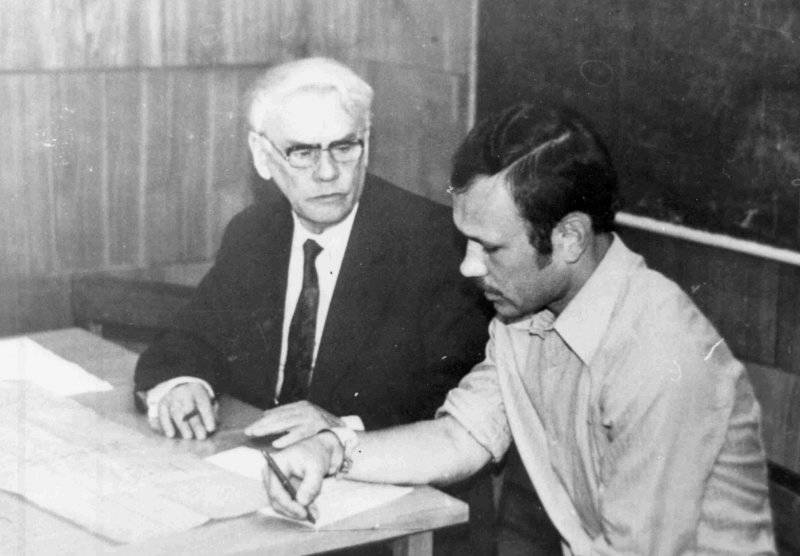
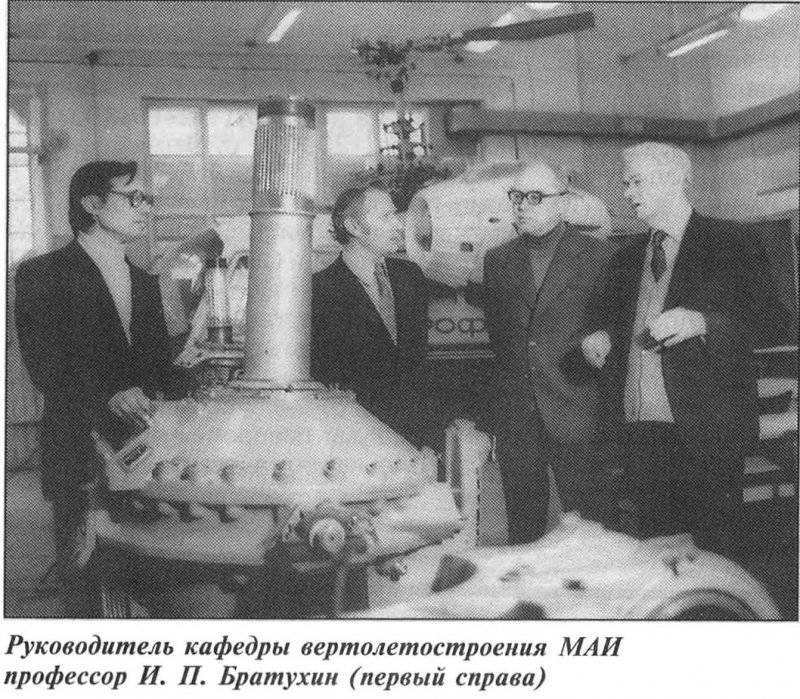
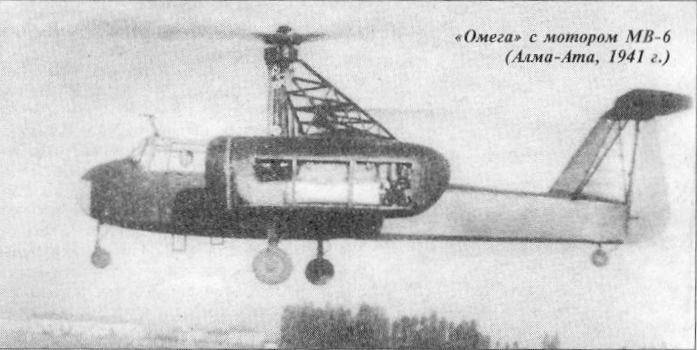

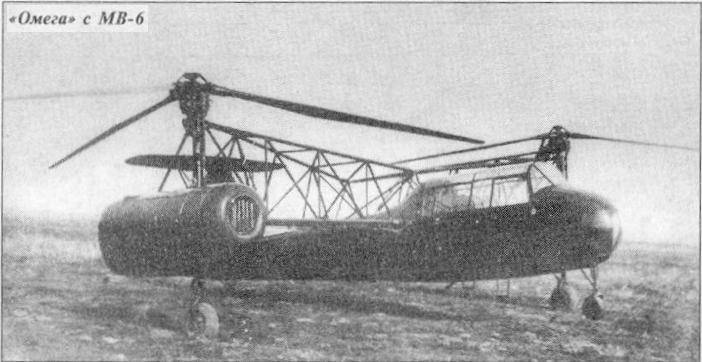
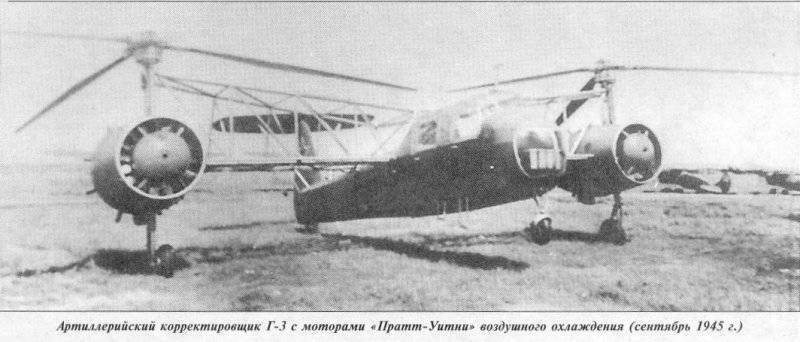
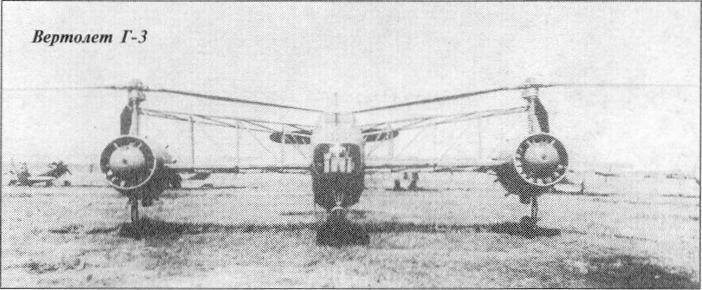
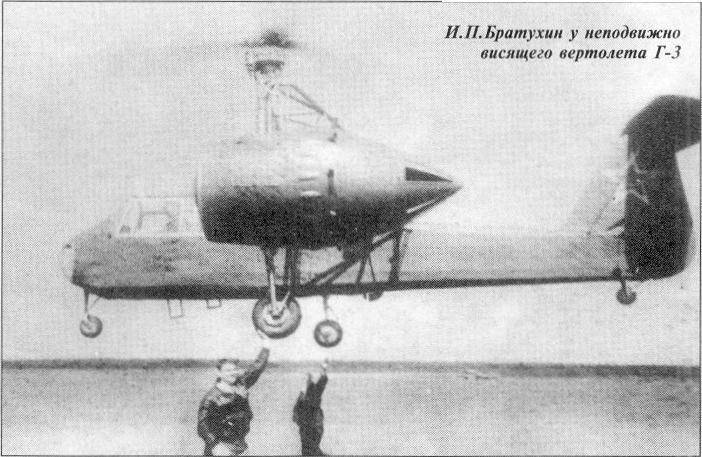
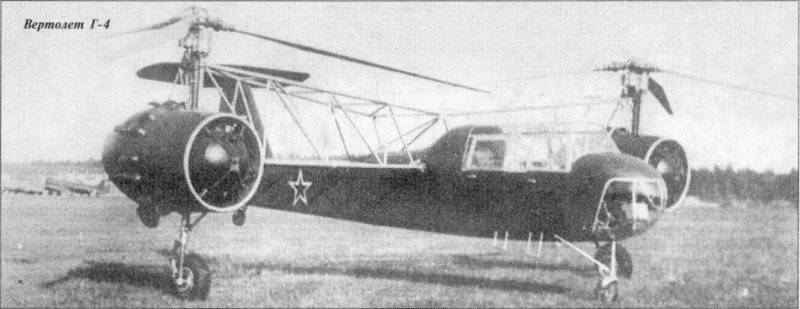
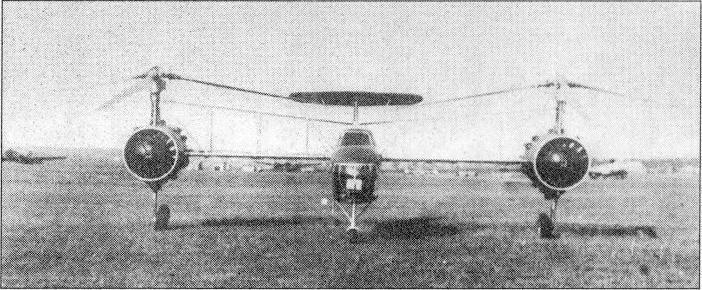
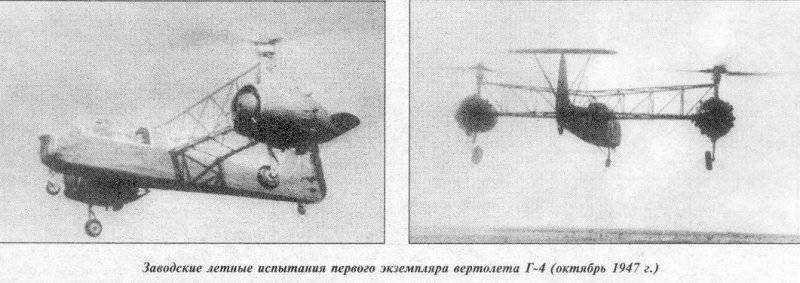
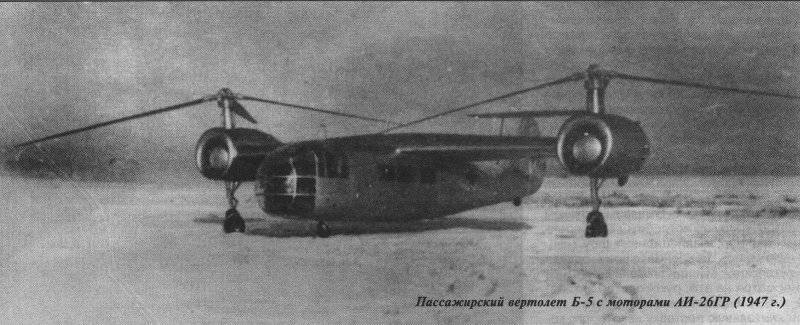
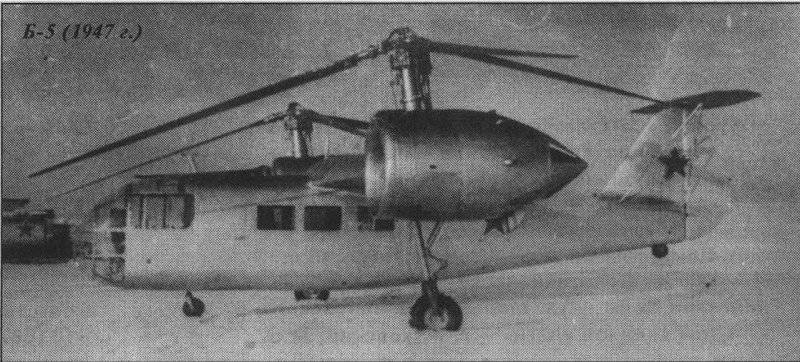
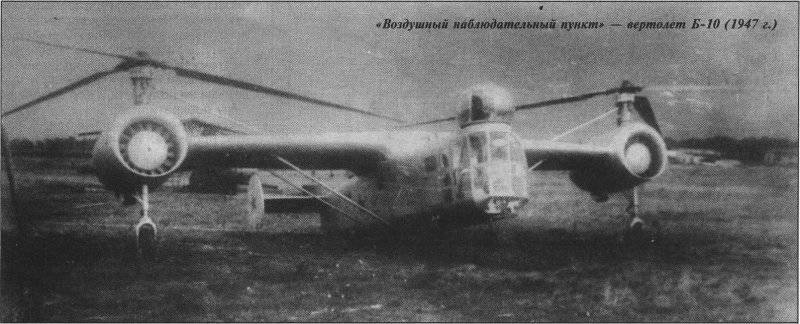
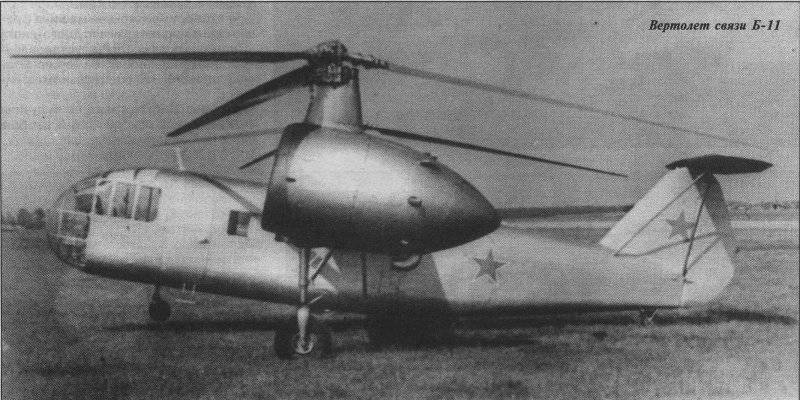
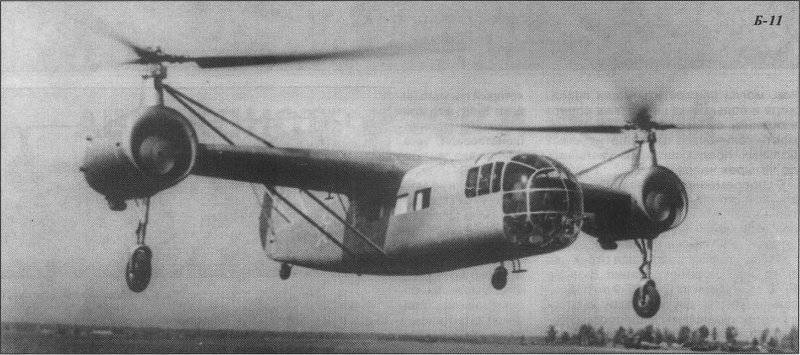
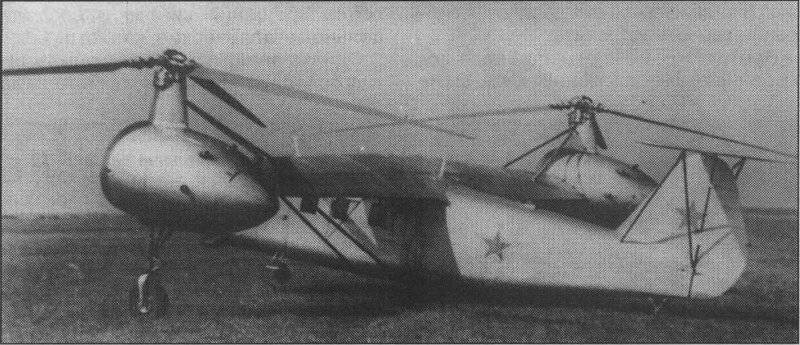
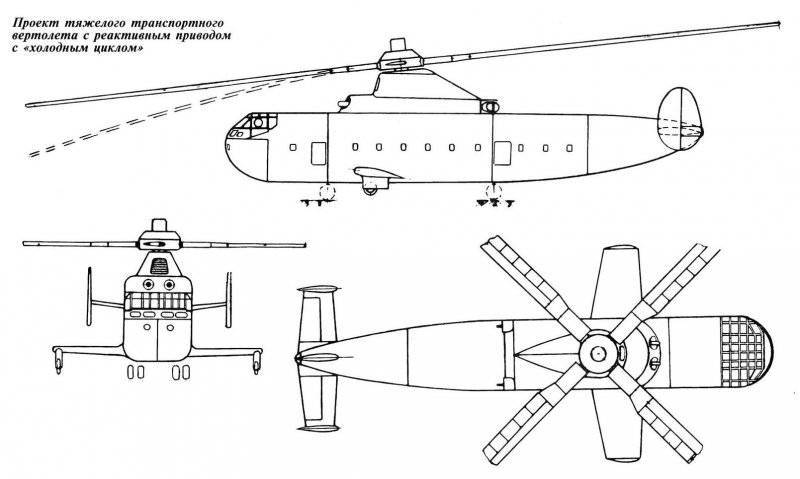
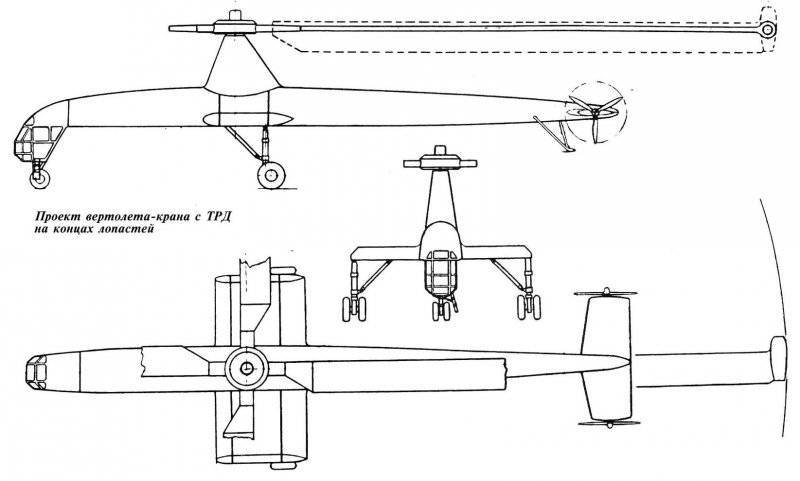
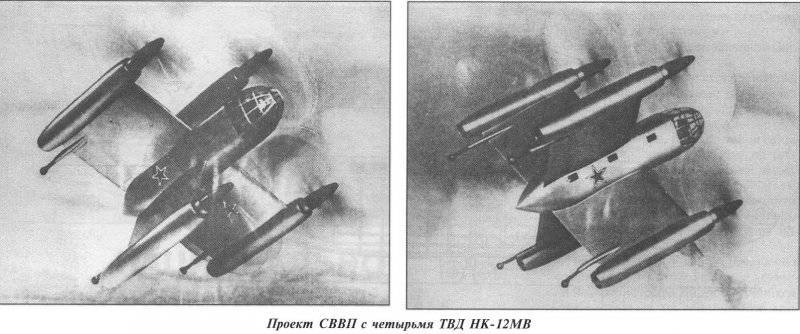
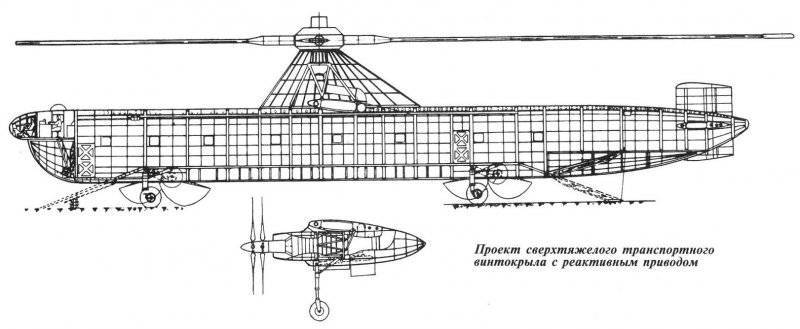
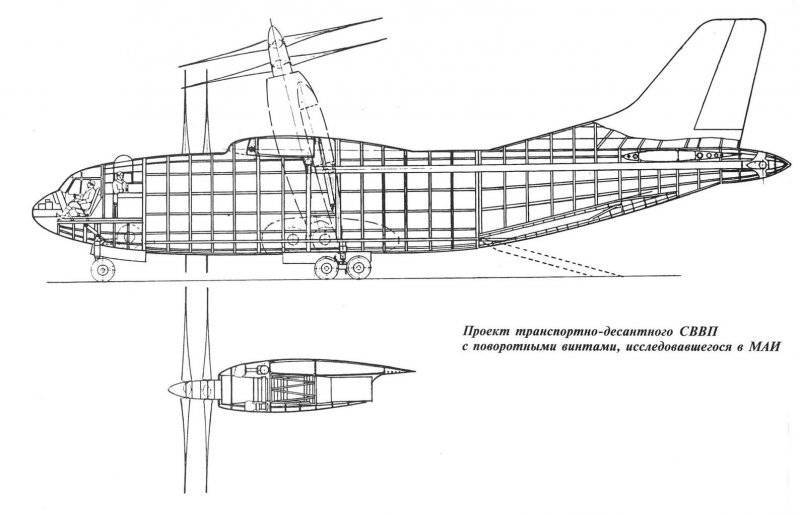
Information